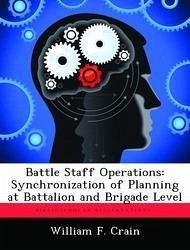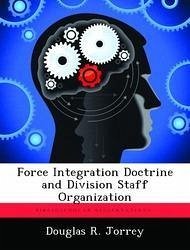Nicht lieferbar

Division Battle Staff Requirements for Sustained Peace Enforcement Operations
Versandkostenfrei!
Nicht lieferbar
In December 1995, the Dayton Peace Accords led to a US Army deployment to Bosnia for participation in a complex, multinational peace enforcement mission, Operation JOINT ENDEAVOR. The 1st Armor Division led the first US force, Task Force Eagle, to occupy Multinational Division North, and three other divisions have since served as the nucleus of Task Force Eagle. This monograph examines the division battle staff in light of the experiences in Bosnia to assess whether the traditional battle staff structures and operations meet the demands of a peace enforcement operation. The monograph sets the ...
In December 1995, the Dayton Peace Accords led to a US Army deployment to Bosnia for participation in a complex, multinational peace enforcement mission, Operation JOINT ENDEAVOR. The 1st Armor Division led the first US force, Task Force Eagle, to occupy Multinational Division North, and three other divisions have since served as the nucleus of Task Force Eagle. This monograph examines the division battle staff in light of the experiences in Bosnia to assess whether the traditional battle staff structures and operations meet the demands of a peace enforcement operation. The monograph sets the stage for this examination by establishing the combat battle staff as the baseline for comparison and then describing the operational environment for peace enforcement. With this background, the monograph analyzes three specific aspects of the division battle staff experiences in Bosnia: staff functions, structures, and procedures. Three criteria measure staff effectiveness in coordinating or facilitating the division's response to the demands of the peace enforcement operational environment. One is the ability to eliminate hostilities and enforce a peace agreement. Second is the ability to deal with civilians, including local government and law enforcement, non-governmental organizations (NGO), and the media. Last is the ability to assess progress towards accomplishing military tasks that support the political end-state. The result of this analysis is an identification of key players, structures, and procedures to conduct peace enforcement operations. The fundamental requirements for the planning staff in peace enforcement operations are the same as those for the battle staff in a combat operation, but there are some significant refinements. The planning process still requires a chief planner, and feedback is still critical to drive and adapt the process. The military decision making process remains the best way to rationalize the work of the planners. The differences in the This work has been selected by scholars as being culturally important, and is part of the knowledge base of civilization as we know it. This work was reproduced from the original artifact, and remains as true to the original work as possible. Therefore, you will see the original copyright references, library stamps (as most of these works have been housed in our most important libraries around the world), and other notations in the work. This work is in the public domain in the United States of America, and possibly other nations. Within the United States, you may freely copy and distribute this work, as no entity (individual or corporate) has a copyright on the body of the work. As a reproduction of a historical artifact, this work may contain missing or blurred pages, poor pictures, errant marks, etc. Scholars believe, and we concur, that this work is important enough to be preserved, reproduced, and made generally available to the public. We appreciate your support of the preservation process, and thank you for being an important part of keeping this knowledge alive and relevant.











